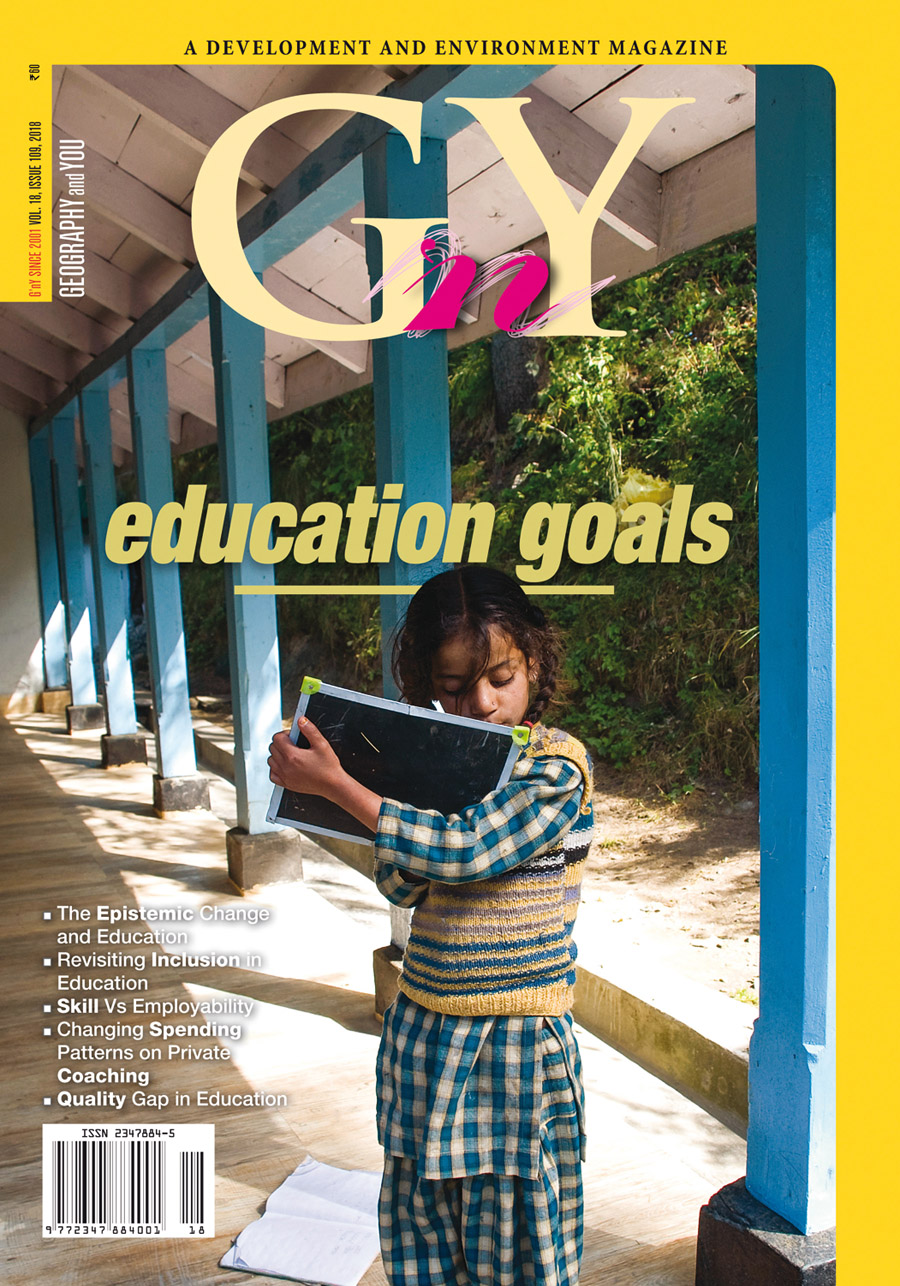
Inside this issue
In Response
Health risks of air pollution, an article in the 108th (1-15 May, 2018) issue of G'nY raised multiple queries from our readers about how air pollution can be lethal to the human body. We present here a brief response to help understand the mechanism by which pollution enters the blood stream and the bodily reactions that results.
Opinion
Education Goals
The Right to Education Act, 2009 was implemented in the light that education is an entitlement and not an act of charity. The Act includes the provision of a quota for disadvantaged sections in private, unaided schools. However, a near-decade later no meaningful progress has been achieved.
The National Policy on Education of 1968 and 1986 were framed with the objective to foster a national identity and kept in mind the social purpose of education. These features are conspicuously absent from the draft policy of 2016.
By 2025, an unprecedented demographic transition will put India in a position where 64 per cent of its population will be of working age. Currently, the absence of a skilled workforce ails the economy. An overhaul of our education system is required to rectify the current flaws and to cater to the needs of a growing economy.
Private coaching market in India is presently estimated to be over 70 billion USD. With high individual spending and marked state wise disparity a concerted examination of this market is imperative.
Expenditure and infrastructure cannot be the only measures of education. Learning outcomes and retention rate—a measure of quality education, are both poor in India. A multi-pronged approach to meet the deficits needs to be adopted.
India Outdoors
The Thane Creek is rapidly changing with an increase in the built-up area. If the current rate of change continues, the Creek is likely to become ecologically inactive in the near future.
IN CONVERSATION WITH
India’s school education is riddled with problems that need urgent attention. Demystifying the lacunae, Anil Swarup, Secretary, School Education and Literacy, Ministry of Human Resource and Development speaking with the Editor G’nY, exudes positivity and a voice of hope in transforming the system from within.
The affable Professor N V Varghese, Vice Chancellor at National Institute of Educational Planning and Administration (NUEPA), speaks with G’nY about how higher education shapes the nature of discourse and bolsters forward linkages.
In brief
Well structured, holistic and fulfilling learning —is that even desirable? People for whom knowledge works, extending the halo beyond the self is painful. It is ironic that we have been ‘granted’ and have subsequently diligently followed a system of education by the very same people who have k
